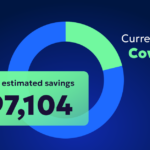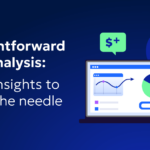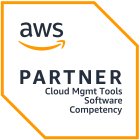
The Cloud Cost Dilemma: Scale vs. Return on Investment

CEO and Co-founder
(This post was originally published on The New Stack)
If you enjoy a monthly pat on the back while looking over your cloud invoice, believing that on-premises costs would be a great deal higher, then this recent report by VC firm Andresson Horowitz (a16z) was probably a real buzz-kill.
a16z dove deep into the numbers of cloud vs on-premises Total Cost of Ownership (TCO) and presented a sobering conclusion: “If you’re operating at scale, the cost of cloud can at least double your infrastructure bill.”
Getting a Handle on the Cloud Paradox
Let’s get some perspective on what the report was trying to tell us, as the authors were clear that they weren’t advocating for repatriation. Indeed, they recognize the “incredible value proposition” of immediately available infrastructure at scale.
The paradox is, at its core, about the maturity of your business. As a start-up, the cloud is the perfect soft landing. First, zero CapEx and all OpEx means you don’t need anywhere near as large an initial investment, as you’re focusing on operational expenditure with an “as-a-service” subscription model rather than capital expenditure by building your own infrastructure.
Next, an experienced cloud provider handling infrastructure on your behalf limits your need to onboard in-house developers and engineers, and you get access to a cornucopia of cloud-based applications — just a hop, skip and an API away — to build out your core product or service.
As your rapidly growing start-up morphs into something larger and more stable, and your initial investment needs to be transitioned to ongoing profits, things get a little more complicated.
The more you scale your cloud, the more engineers you need to onboard to manage it. These engineers are highly prized in an increasingly cloud-focused market with a serious skills-gap, and come with niche skills that demand a large paycheck. As cloud use expands across the company — from storage and compute, to back-up, SaaS products or security — many companies feel they are signing over a ‘blank check’ to their cloud provider.
This is because your business is dynamic. As you onboard new customers and build new features, your infra needs to scale with a growing amount of compute resources to manage the load. At the same time, the speed of growth means it’s tough to look for an alternative path to the one you’ve started down, without impacting business continuity. Plus, ultimately your vendor is focused on their own profit and growth; AWS for example has comfortable cloud margins of around 30% each year.
Looking at the Bigger Picture
So, is the cloud always the most cost effective option? While cloud is definitely likely to save you on initial start-up costs, as your business scales you might find that your costs start rising as well.
However, ask yourself another question. Regardless of whether it’s the most inexpensive option, is cloud the right option for your business?
If you moved to the cloud, or started your journey there in the first place, reducing costs was probably one of just many items on your checklist. Turns out, you may not be able to have it all. Ask yourself, what other benefits are you gleaning from your cloud environment?
For some, it will be quick delivery of new features and updates using a DevOps pipeline that’s ten times as fast as you could achieve on-premises. For others, it might be the peace of mind that comes with scale-on-demand to meet peak traffic, seasonal demand, or a sudden viral marketing campaign (*Refreshes Google analytics hopefully*). Perhaps it’s flexibility, ease of integration, confidence over the Shared Responsibility Model for security, or any number of other reasons why the cloud is the only pandemic-free zone, forecasted to grow 23% this year.
But… Money Matters! Is There a Way to Have it All?
When you’re building out your organizational goals and your initial charter for your Cloud Center of Excellence, here are some best-practices that can help to guide your vision.
If these benefits are important to you, then occasionally you might find that cost-optimization needs to relinquish that driver’s seat to make way for all these passengers. If that’s the case for you and if other factors are just that important, then that’s a sound and reasonable strategy. However, it doesn’t give you a free pass on reducing cloud spend. Your ROI is important, and you can’t be seen to be haphazardly throwing money at your cloud environment without the data to back it up.
If repatriation isn’t something you’re considering, but you want to stay on top of the costs of an ongoing cloud strategy, here’s three tips to get you started:
Move engineers away from repetitive and mundane tasks: Are you spending too much time recruiting and hiring engineers, only to waste their skills on mundane cloud management tasks? Free them up to help where humans thrive (hint: it’s strategy, decision-making and customer support) and look for ways to add AI and automation to the tasks best suited to robots. (C3PO, it’s time for you to shine.)
Put together a FinOps governance strategy: Here’s where you map your existing usage and cloud spend and use business intelligence (BI) tools to find the hidden trends and patterns underneath the numbers. You can then create a data-driven budget for cloud optimization — including system design changes, re-architecture, third-party efficiency solutions, and even repatriation where it makes sense to do so.
Use the cost-optimization tools available to you: a16z wasn’t all doom and gloom. They did comment that smart allocation of committed-use discounts, such as Reserved Instances, could bring your cloud spend down considerably — as could leaning on third-party optimization tools, which according to a16z have been shown to reduce cloud spend by anywhere from 10%-40%.
Make cloud spend a measurable KPI: Most importantly, don’t consider “whatever the cost of cloud is” to be a necessary expenditure. Instead, highlight cloud costs as a metric that the whole organization has responsibility for. Set up incentives for smart thinking that reduces expenditure, creates goals and milestones to keep you focused, and demands attention from all departments on tracking and managing cloud costs. Read more about typical KPI as Cloud Efficiency Rate.
You don’t have to choose between scale and cloud ROI. Zesty’s optimization platform is used by companies to keep their dynamic cloud infra efficient, in terms of cost and performance, and with minimal effort.
Chat with one of our cloud experts to learn how.
Related Articles
-
 Zesty introduces Insights: actionable recommendations for immediate cloud savings
Zesty introduces Insights: actionable recommendations for immediate cloud savings
July 24, 2024 -
 Zesty introduces Commitment Manager for Amazon RDS!
Zesty introduces Commitment Manager for Amazon RDS!
July 10, 2024 -
 How to clear budget for AI implementation?
How to clear budget for AI implementation?
June 18, 2024 -
Ensure precision in cloud resource allocation: Control mechanisms you need
June 16, 2024 -
 Straightforward cloud cost analysis: Clear Insights to move the needle
Straightforward cloud cost analysis: Clear Insights to move the needle
June 11, 2024




